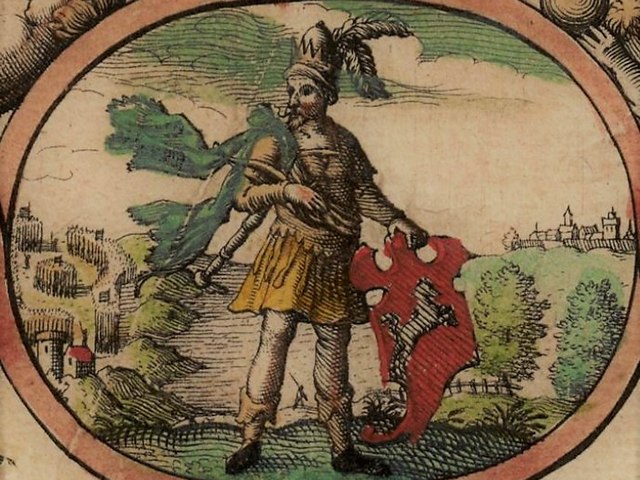Hengist and Horsa are Germanic brothers said to have led the Angles, Saxons and Jutes in their supposed invasion of Britain in the 5th century. Tradition lists Hengist as the first of the Jutish kings of Kent.
The brothers in Edward Parrott's Pageant of British History (1909)
Hengist from John Speed's 1611 "Saxon Heptarchy"
Hengist and Horsa arriving in Britain, as depicted by Richard Rowlands (1605)
Vortigern and Rowena, by William Hamilton (1793)
The Saxons were a group of Germanic peoples whose name was given in the early Middle Ages to a large country near the North Sea coast of northern Germania, in what is now Germany. In the late Roman Empire, the name was used to refer to Germanic coastal raiders, and in a similar sense to the later "Viking". Their origins are believed to be in or near the German North Sea coast where they appear later, in Carolingian times. In Merovingian times, continental Saxons had been associated with the activity and settlements on the coast of what later became Normandy. Their precise origins are uncertain, and they are sometimes described as fighting inland, coming into conflict with the Franks and Thuringians. There is possibly a single classical reference to a smaller homeland of an early Saxon tribe, but its interpretation is disputed. According to this proposal, the Saxons' earliest area of settlement is believed to have been Northern Albingia. This general area is close to the probable homeland of the Angles.

The remains of a seax together with a reconstructed replica
Alfred the Great
The later stem duchy of Saxony (c. 1000 AD), which was based in the Saxons' traditional homeland bounded by the rivers Ems, Eider and Elbe
1868 illustration of Augustine addressing the Saxons








